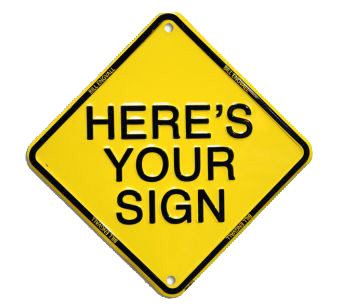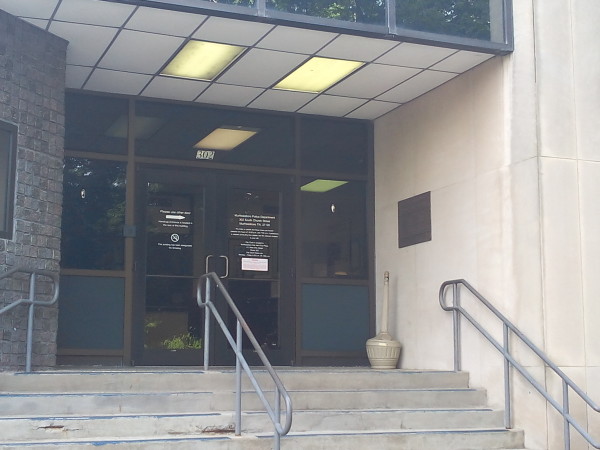
A proposed replacement to the Murfreesboro sign ordinance has been sent back to the drawing board after the city’s planning commission did not vote on the measure.
Many business owners spoke out in opposition to the passage of this ordinance, saying it was far too restrictive, and it would hurt their sales by banning them from fully utilizing their window space to inform the public who they are and what they do.
Seemingly, the element drawing the most criticism was a passage containing a ban on any window graphics in the area from three feet above ground level to six feet above ground level–a “clear vision zone.” The establishment of this zone would have meant that businesses in Murfreesboro could not affix to their window a sticker with their hours, or a logo or decal of any kind at customers’ eye level.
Numerous Murfreesboro residents called this a governmental overreach.
“The whole idea is BS,” as Buddy Meeks put it.
“I can’t believe we have to fight to protect our windows,” a local sign maker stated.
“Why is this even being discussed? This seems like nonsense,” said James Slayton, “and not something the city should waste time on.”
Said another local entrepreneur, “This is anti-small business.”
Eddie Smotherman, a member of the Murfreesboro City Council and the Murfreesboro Planning Commission, said the language in the sign ordinance was a matter of public safety; that if there were an emergency and the police or fire department or medical personnel needed to enter a building, they need to first see inside, and that employees need to be able to see out in case someone is approaching them with a weapon.
Meeks, who said he also owned a sign company for seven years, met this fearmongering with ridicule.
“Please state the last time in Murfreesboro that an employee was accosted because of sign graphics,” Meeks said. “There are none, zero, zip data that supports the idea that employees are in danger because of sign graphics. This whole thing is about a sign-Nazi that doesn’t like them . . . using ‘safety’ to get their way.
“‘Safety’ is a smokescreen used by politicians to impose sign laws,” Meeks continued. “The Supreme Court said it’s OK to restrict signage if it’s in the public’s best interest from a safety standpoint. So someone goes to the city attorney—not just in Murfreesboro—and says, ‘What can I do about all of these signs?’ And the city attorney says, ‘Make it a safety issue.’”
But Smotherman insists that the clear vision zone “may save someone’s life” and would have been a good thing for public safety.
“No new regulations,” said Ron Robertson. “Murfreesboro is already well known as being very unfriendly to businesses . . . The issue has nothing to do with visibility into the business or safety. It is just the city council with their beliefs that they want our city to look like what they want. Just another control issue and requiring even more sign police to cite business owners.”
“Do you want no sign ordinance at all and have our city look like Juárez, Mexico?” Smotherman quipped on a discussion on the Downtown Dwellers Facebook Group.
The councilman and planning commission member credits input from the police department for bringing the hazards of window signage into the public discourse.
“Covering up windows is a safety issue,” said Amy Norville with the Murfreesboro Police Department.
In a fun twist, the Murfreesboro Police Department building itself has stickers on its windows in what would be considered the “clear vision zone.”
Some residents pointed out that some business have no windows at all; they are even harder to see in than those with partially-covered windows.
Another point that was raised is that even if the clear vision zone would have gone into effect, a business could still place curtains, blinds or shelving directly inside a window.
“We’re not talking about going into anyone’s business and telling them what they can do with displays,” Smotherman said. “You can still use curtains or blinds.”
Of the residents objecting to the new ordinance, he said: “About every one of them who complained were already out of compliance (with the current sign ordinance); “there has to be some rules, or else it would be a complete free-for-all. If we don’t have any rules whatsoever they would wrap their building with signage.”
Smotherman says he does not expect the planning commission to consider the new sign ordinance as it was first presented to them, and they will await a revision to come from the building and codes department.
In the meantime, a movement has begun to encourage the police department to voluntarily remove the signage in the critical clear vision zone on its own windows, and set the tone for the whole city.
“Our officers’ lives are at risk every day they have to work in that building behind hazardous window lettering,” one local activist proclaimed.
For more information on planning commission and city council agendas and decisions, and on local government in general, visit murfreesborotn.gov.













